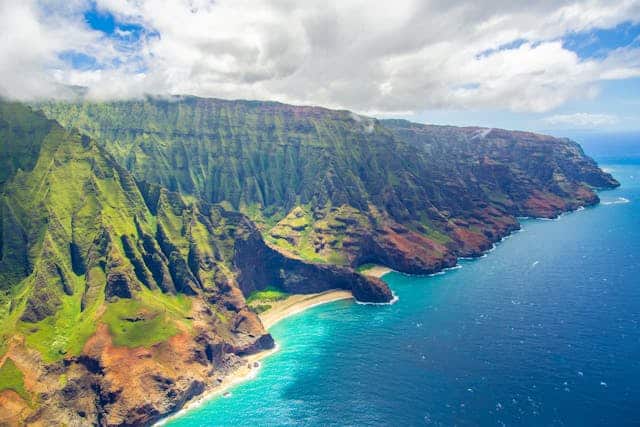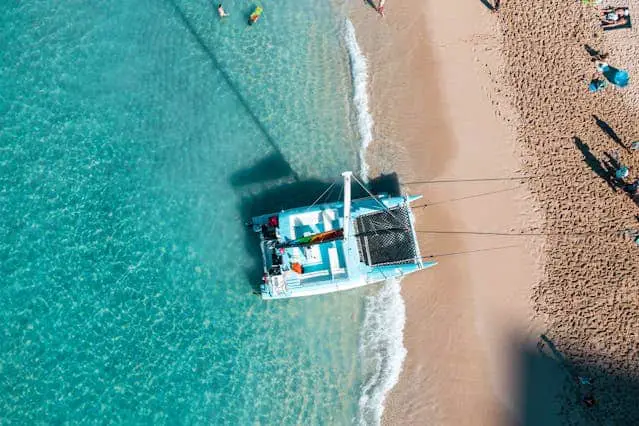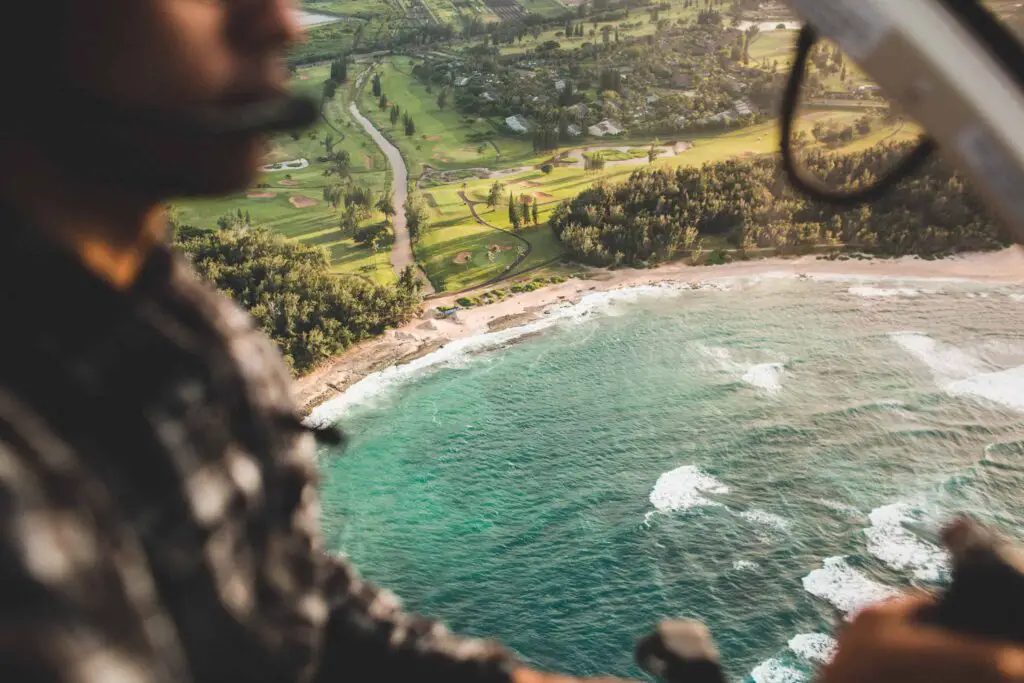Hawaii’s beauty is legendary—but so is its geographic sprawl. The archipelago stretches over 1,500 miles, with each of its main islands offering a distinct personality, landscape, and rhythm. Whether you’re chasing waterfalls on Kauai, surfing Oahu’s North Shore, hiking the Big Island’s lava fields, or exploring Maui’s lush valleys, island hopping lets you weave together multiple chapters of an unforgettable Hawaiian story.
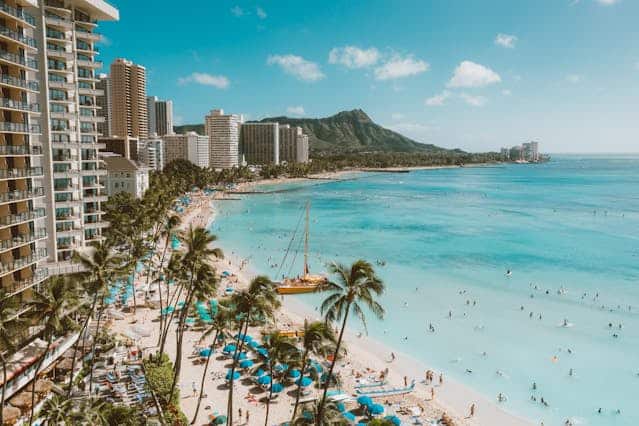 But visiting more than one island takes planning. Unlike other tropical destinations, Hawaii doesn’t have a robust ferry system or regional trains—inter-island travel almost always means flying, with a few niche exceptions. Choosing how to get from place to place, and when to do it, is one of the most important decisions you’ll make when building your Hawaii itinerary.
But visiting more than one island takes planning. Unlike other tropical destinations, Hawaii doesn’t have a robust ferry system or regional trains—inter-island travel almost always means flying, with a few niche exceptions. Choosing how to get from place to place, and when to do it, is one of the most important decisions you’ll make when building your Hawaii itinerary.
Before diving into transportation details, consider the best time of year to island hop. Hawaii enjoys a tropical climate year-round, but spring (April–June) and fall (September–early November) are considered ideal: fewer crowds, mild weather, and often better airfare. Winter (mid-December–March) brings surfers, whales, and higher prices; summer (June–August) is family vacation season, with great weather and matching crowds. Island hopping during these shoulder seasons lets you experience the islands more peacefully, with easier travel and a broader range of accommodations.
- Seasons & Planning Considerations
- Flying Between Islands
- Boat Travel Between Islands
- Helicopter Travel Between Islands
- Renting a Car on Each Island
- Final Thoughts & Tips
Ready to connect the islands? Let’s explore your options.
Seasons & Planning Considerations
Hawaii offers stunning landscapes and vibrant culture year-round, but shoulder seasons—spring (April–June) and fall (September–mid-November)—are ideal for island hopping. During these months, travel demand is lower, hotel rates are more reasonable, and weather remains reliably warm. Although summer brings the strongest surf and winter boasts whale-watching, the transitional seasons offer a smoother experience with fewer crowds—perfect for families or multi-island travelers. But let’s be honest, there is no “bad” time to visit Hawaii.
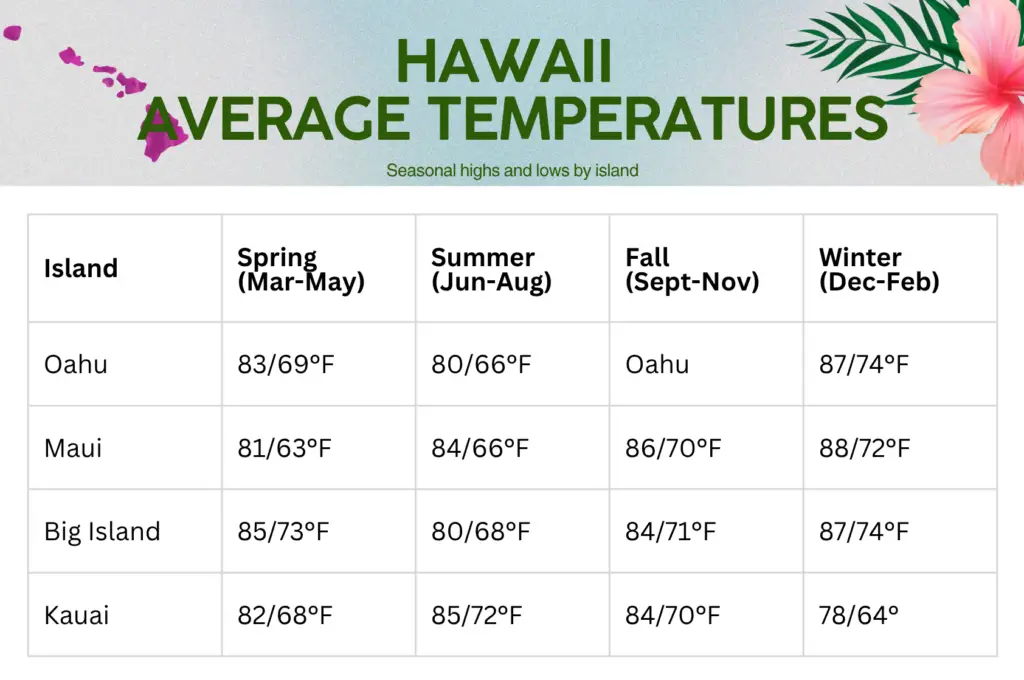
Planning an island-hopping itinerary requires thoughtful logistics. Unlike many tropical destinations, Hawaii lacks inter-island bridges and is served mostly by air—though select boat and air alternatives exist. Spoiler for those hoping that air travel wasn’t the main method of transport, it is far and away the most popular way to move about the islands. In this guide, we’ll walk through every method available: from planes and ferries to helicopters and car rentals, so you can flip between Maui, Oahu, Kauai, the Big Island, and more with ease.
Flying Between Islands
Although the flights are short, island hopping by plane is by far the most popular method of travel. If you are anything like me, I was brought to researching this topic because I love alternative methods of travel. However, the airplane is the forerunner, so let’s dive into the details.
Airlines & Routes
- Hawaiian Airlines is the largest inter-island operator, offering around 170 daily flights between major islands—including O‘ahu (HNL), Maui (OGG), Kaua‘i (LIH), and the Big Island (KOA/HNL). Hawaiian Airlines is the most established and reliable inter-island carrier, with the most daily departures and consistent on-time performance. Known for its warm service and Hawaiian-themed in-flight experience (including complimentary POG juice on most routes), it’s a great choice for travelers seeking convenience and a touch of local hospitality.
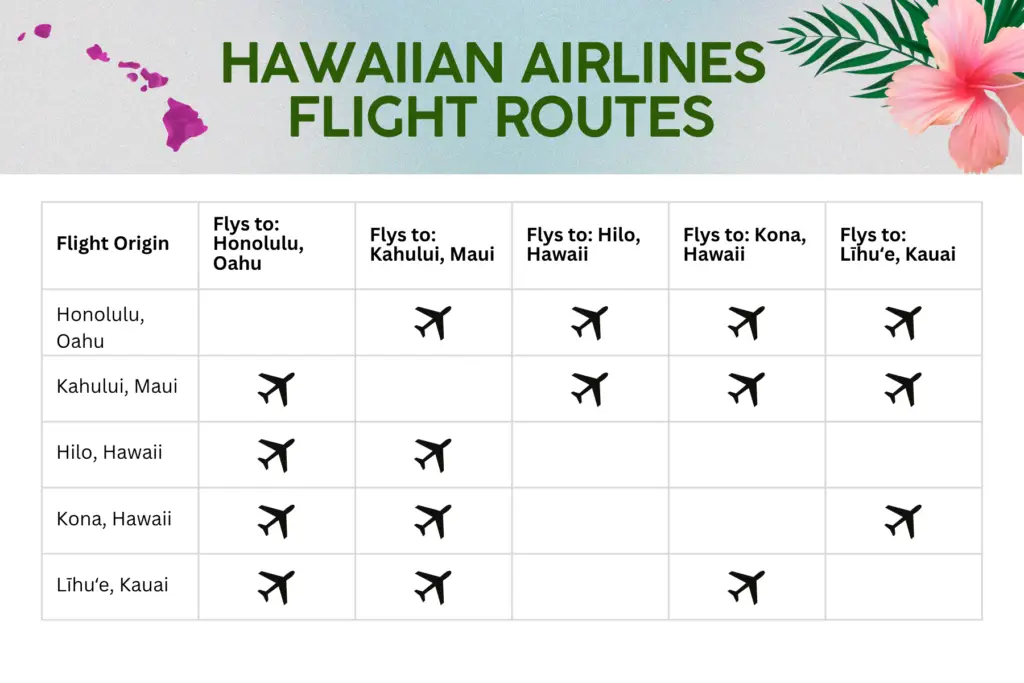
- Southwest Airlines (Hawaiian routes) entered the market in 2019, matching many of Hawaiian’s main routes. Southwest brought competitive pricing to the inter-island market. Though newer to Hawaii, their flights maintain the brand’s laid-back energy and often appeal to budget-savvy travelers looking for straightforward, no-frills service.
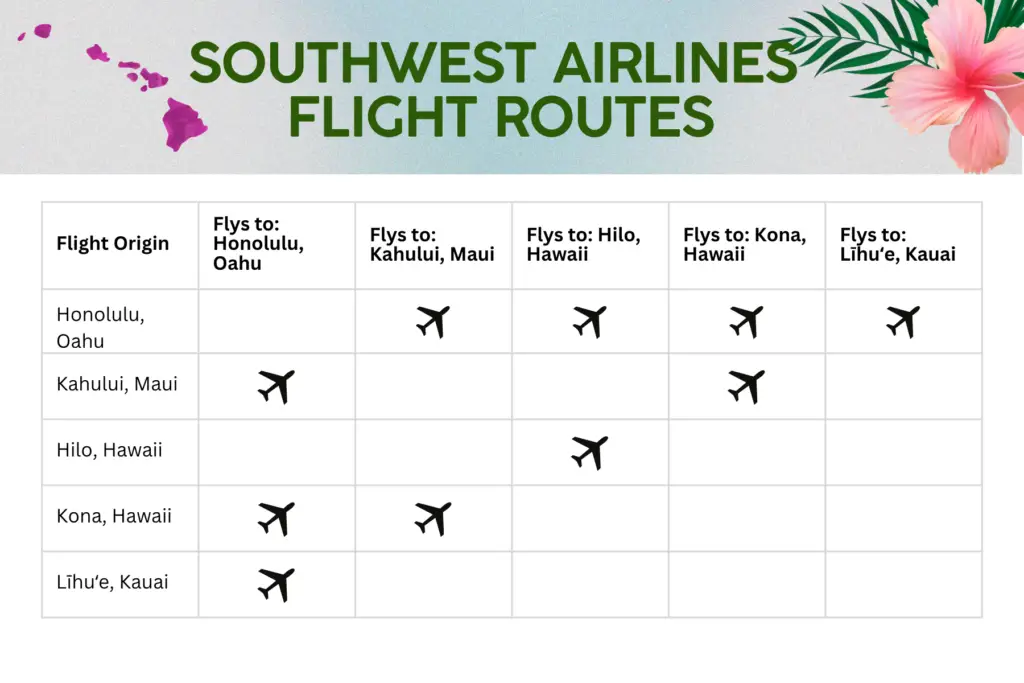
- Mokulele Airlines, using small turboprops, serves remote destinations like Molokaʻi and Lānaʻi, plus short hops from Kahului on Maui. Mokulele offers a more adventurous and intimate flying experience aboard small turboprop planes, often seating just 9 passengers. With flights servicing harder-to-reach destinations like Molokaʻi and Lānaʻi, it’s a favorite for travelers seeking access to the less-touristed islands or those who enjoy scenic, low-altitude flights with stunning window views.
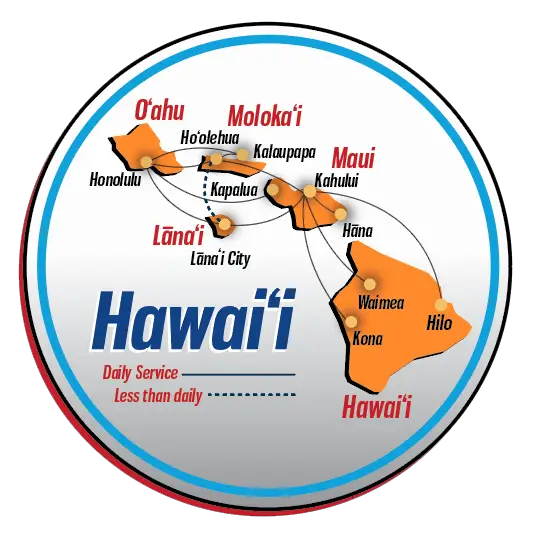
Flight Times & Onboard Experience
Most inter-island flights last 20–55 minutes, depending on the route . Expect a simple onboard experience: water or juice service, light snacks on Hawaiian and Southwest flights, and no meal service. Mokulele flights are minimal—typically small planes with light refreshments at best.
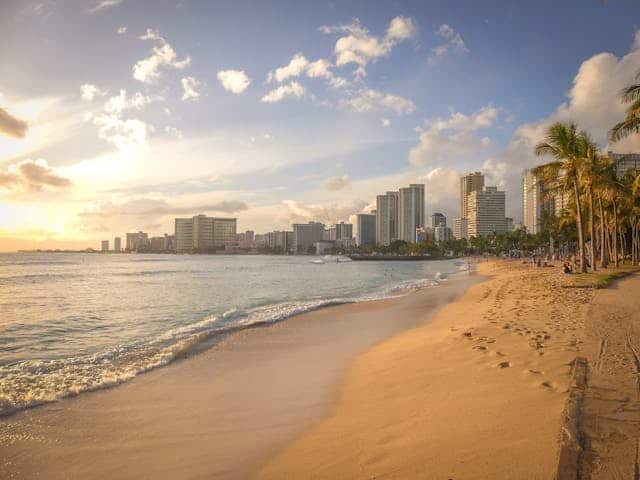 Booking Tips
Booking Tips
- Book early, especially during spring breaks or holidays.
Inter-island flights can fill quickly during peak travel times like Golden Week, winter break, and spring vacations, so secure your preferred times and prices well in advance. - Look for deals mid-week when fares and crowds are slightly smaller.
Tuesdays and Wednesdays often have lower prices and more seat availability, making them smart choices for budget-conscious travelers or families coordinating group flights. - Opt for aisle or window seats for best views during descent.
Many routes offer scenic flyovers of neighboring islands—on clear days, flying from Kauaʻi to Maui may reveal views of Molokaʻi, while Big Island flights might showcase dramatic coastlines and volcanic terrain.
Boat Travel Between Islands
The Defunct Superferry
The once-promising Hawaii Superferry (the MV Alakai) offered service from 2007–2009 between O‘ahu–Maui and O‘ahu–Kaua‘i. However, the project faced intense opposition and legal battles due to environmental concerns—it consumed more fuel per passenger than planes, disrupted humpback whale migration, and risked transferring invasive species between islands. Community protests, scientific studies, and a Supreme Court ruling for environmental review led to its shutdown and bankruptcy, stalling hopes for resuming ferry-based island travel.
Maui ↔ Lānaʻi Ferry
Operated by Expeditions, the Maui–Lānaʻi ferry remains the only regular passenger ferry in Hawaii, crossing the ‘Auʻau Channel in about 70 minutes, up to three times daily . The route offers scenic views of the channel and possible marine wildlife sightings—making it a relaxed, car-free alternative for this one inter-island pair.
Visiting Lānaʻi offers a peaceful, off-the-beaten-path escape from Hawaii’s more developed islands. With no traffic lights, a small-town feel, and pristine natural beauty, it’s ideal for families or couples seeking serenity—explore secluded beaches like Hulopoʻe Bay, rugged backroads by Jeep, and the otherworldly landscapes of Keahiakawelo (the Garden of the Gods).
Challenges of Boating
Even today, boat travel between islands is limited by several factors:
-
Rough seas & variable conditions, especially outside protected channels
-
Wildlife migration routes, where boat traffic could disturb whales, dolphins, or turtles
-
Risk of carrying invasive species or pathogens between fragile island ecosystems
-
Harbor limitations—most inter-island ports lack the infrastructure to support regular ferry services
Private Charters
For families wanting custom travel or a unique adventure, private yacht or catamaran charters are available, particularly between Maui–Molokaʻi–Lānaʻi. These offer beachfront pickup and greater flexibility but come at a premium. These offer tailored routes—with stops for snorkeling, wildlife, or sightseeing—and beach or harbor pickup.
Examples include:
-
Sea Maui (Maui-based): Private catamaran and yacht charters to Lānaʻi, Molokaʻi, and West Maui, with options for snorkeling or sunset cruises.
-
Hawaii Sailing Adventures: Offers crewed catamaran and yacht charters from Maui, O‘ahu, Kaua‘i, Lānaʻi, Molokaʻi, Big Island, tailored to your group’s interests .
-
TradeWinds Charters: Overnight and multi-day cruises between O‘ahu and the quieter islands—ideal for families seeking marine life encounters and remote beaches.
-
Kaha Loa Custom Charters (Maui): Flexible services for snorkeling, fishing, whale watching, or custom day trips to Maui, Lānaʻi, Molokaʻi.
-
Ohana Yachts (O‘ahu): Luxury private yachts offering sport fishing, snorkeling, overnight inter-island trips, and sunset cruises ohanayachts.com.
- ShangriLa (Maui): Offering charters from Maui to Lānaʻi and Molokaʻi, including cruising and diving.
- Private Charter (Hawaii): If you’re staying on the Big Island and want to venture out by charter, check out this one.
Bottom Line:
Boat travel between islands offers memorable experiences—like coastal wildlife watching and beach drop-offs—but it comes with logistical challenges. If you’re after a scenic or leisurely ride with flexibility, private charters are worth the splurge. The only regular passenger ferry is Maui–Lānaʻi, while the Superferry’s environmental legacy remains a cautionary tale.
Helicopter Travel Between Islands
While most visitors fly commercial between islands, helicopter charters provide a fast, scenic, and unforgettable alternative—perfect for luxury travelers, small groups, or those short on time. Below are three top providers with distinct inter-island and aerial options:
Maverick Helicopters
-
Offers a popular 3-island adventure flying Maui → Molokaʻi → Lānaʻi, showcasing towering sea cliffs, rainforest valleys, and remote coastline.
-
Includes narration, photo ops, and smooth transitions between islands.
-
Pricing starts around $469 per person for group bookings.
-
More info: maverickhelicopter.com
Blue Hawaiian Helicopters
-
Specializes in aerial sightseeing tours across Kauaʻi, Oʻahu, Maui, Big Island, and Lānaʻi.
-
Inter-island transfers may be arranged as private custom flights, especially when combined with scenic overflights.
-
Ideal for photography or once-in-a-lifetime excursions.
-
More info: bluehawaiian.com
Paradise Helicopters
-
Offers custom private charters and overflights connecting six islands, including less-frequented stops.
-
Excursions may include volcano viewing, rainforest flyovers, and private landings with picnic or adventure components.
-
Great for travelers building multi-island itineraries with flexibility and exclusivity.
-
More info: paradisecopters.com
Considerations
Helicopter charters are the fastest and most scenic way to hop islands, but they come at a premium.
-
Luggage is limited—soft bags and carry-on sizes only
-
Flights are weather-dependent, especially in windier seasons
-
Book well in advance for popular routes or sunset windows
-
Best suited for small families, couples, or special occasion travelers
There are many helicopter tours available for as little as 15 minutes to hours across the islands focusing on different geographical features. If you’re thinking of taking a helicopter just for fun, consider this Hawaii based helicopter with its own landing spot by a waterfall or if on Maui, consider this one hour tour of the West side of Maui and Molokai.
Renting a Car on Each Island
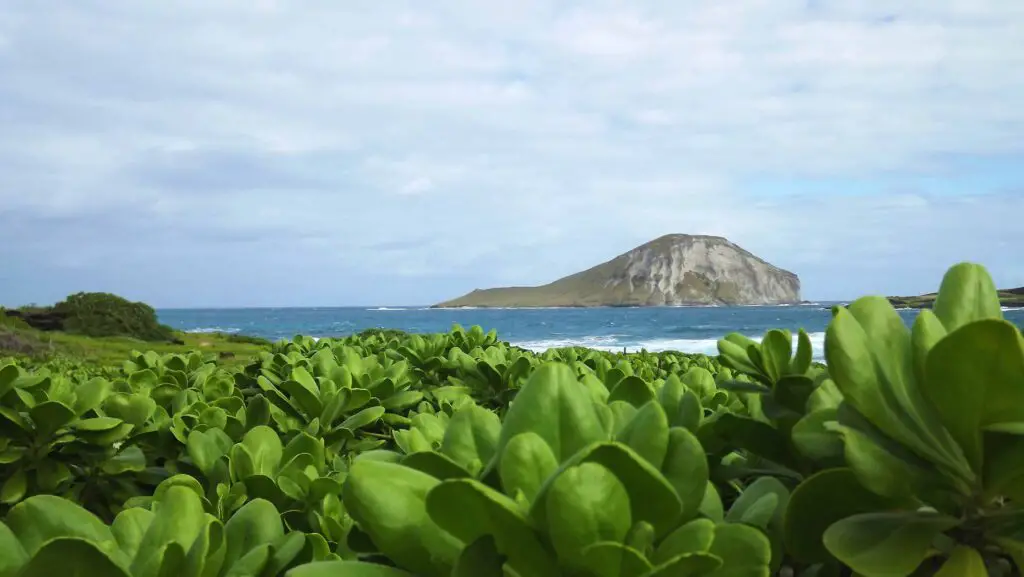 Once you land, renting a car is essential to explore Hawaii beyond resort areas—especially if you plan to visit beaches, national parks, waterfalls, or local eateries spread along coastal roads. Public transportation is limited, and many must-see attractions are in remote or rural areas.
Once you land, renting a car is essential to explore Hawaii beyond resort areas—especially if you plan to visit beaches, national parks, waterfalls, or local eateries spread along coastal roads. Public transportation is limited, and many must-see attractions are in remote or rural areas.
Rental car availability is generally strong at major airports (especially in Honolulu, Kahului, Līhu‘e, and Kona), but demand can spike during holidays, spring break, and summer. To avoid inflated prices or limited inventory, it’s wise to book your rental in advance, particularly during peak or shoulder seasons.
Driving in Hawaii is laid-back and manageable, even for first-time visitors. Coastal highways typically range from 35–45 mph, and roads are well-paved and clearly marked. You’ll find expressways on O‘ahu, but most driving across all islands is scenic, slow-paced, and simple to navigate.
Pro Tips:
- Mid-sized SUVs or crossovers are popular for families—offering space for gear and comfort on uneven roads.
- Look for roof racks if you plan to carry surfboards or paddleboards.
- Pack or pick up a cooler for day trips and beach picnics—many rentals don’t include one, but you’ll want it!
- Gas prices hover around $4–$5 per gallon, so factor fuel into your island budget.
Traditional Rental Companies
You’ll find all the major players: Enterprise, Alamo, Hertz, Avis, and local chains like Island Car Rentals and Kihei Rent A Car (in Maui). Most have desks right at the airport for easy pick-up and return.
Turo: A Peer-to-Peer Alternative
If rental car inventory is limited—or you’re looking for something more personalized—Turo is a great alternative. Think of it as the Airbnb of car rentals: local hosts offer a variety of vehicles, from compact cars and hybrids to Jeeps and 4WDs perfect for rugged island roads. Some listings even include extras like beach chairs or snorkel gear.
- Turo can be more affordable or more flexible than traditional companies.
- Many hosts offer airport drop-off/pick-up, making it convenient for travelers without shuttle service.
- Be sure to review insurance options, as coverage works differently than with traditional rental agencies.
Final Thoughts & Tips
When it comes to island hopping in Hawaii, flying is almost always the most practical and time-efficient option—unless you’re headed to Lānaʻi, where the scenic ferry ride from Maui offers a relaxed and memorable alternative. If you’re weighing cost versus experience, commercial flights are usually the most budget-friendly, while a helicopter tour adds unforgettable views and adventure for those seeking something more immersive. For travelers looking to save both time and money, consider booking your inter-island flights, accommodations, and car rentals as a package, especially when working with travel portals or agencies that offer bundled discounts.
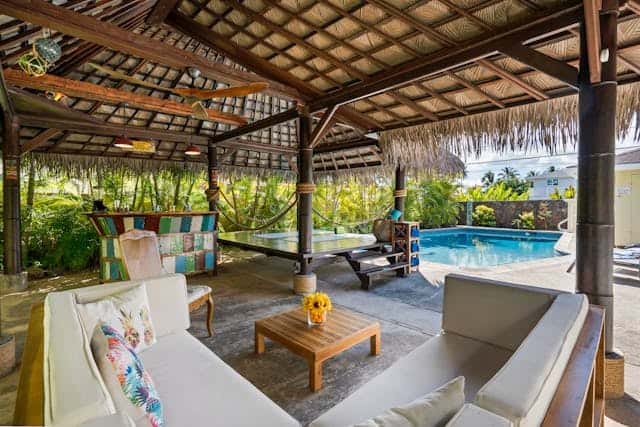 Packing light can make your journey between islands even smoother. Stick to carry-on luggage under 25 pounds if possible—especially helpful on smaller planes—and consider shipping larger gear like scooters or sporting equipment if needed. Finally, even though inter-island flights tend to be punctual, weather can affect schedules, so it’s smart to build in buffer time for transitions, especially before tours, reservations, or your departing flight home.
Packing light can make your journey between islands even smoother. Stick to carry-on luggage under 25 pounds if possible—especially helpful on smaller planes—and consider shipping larger gear like scooters or sporting equipment if needed. Finally, even though inter-island flights tend to be punctual, weather can affect schedules, so it’s smart to build in buffer time for transitions, especially before tours, reservations, or your departing flight home.
No matter how you move between islands—by air, sea, or sky—Hawaiian island hopping is about connecting moments as much as destinations. With warm aloha and thoughtful planning, your multi-island adventure can be both seamless and extraordinary.

